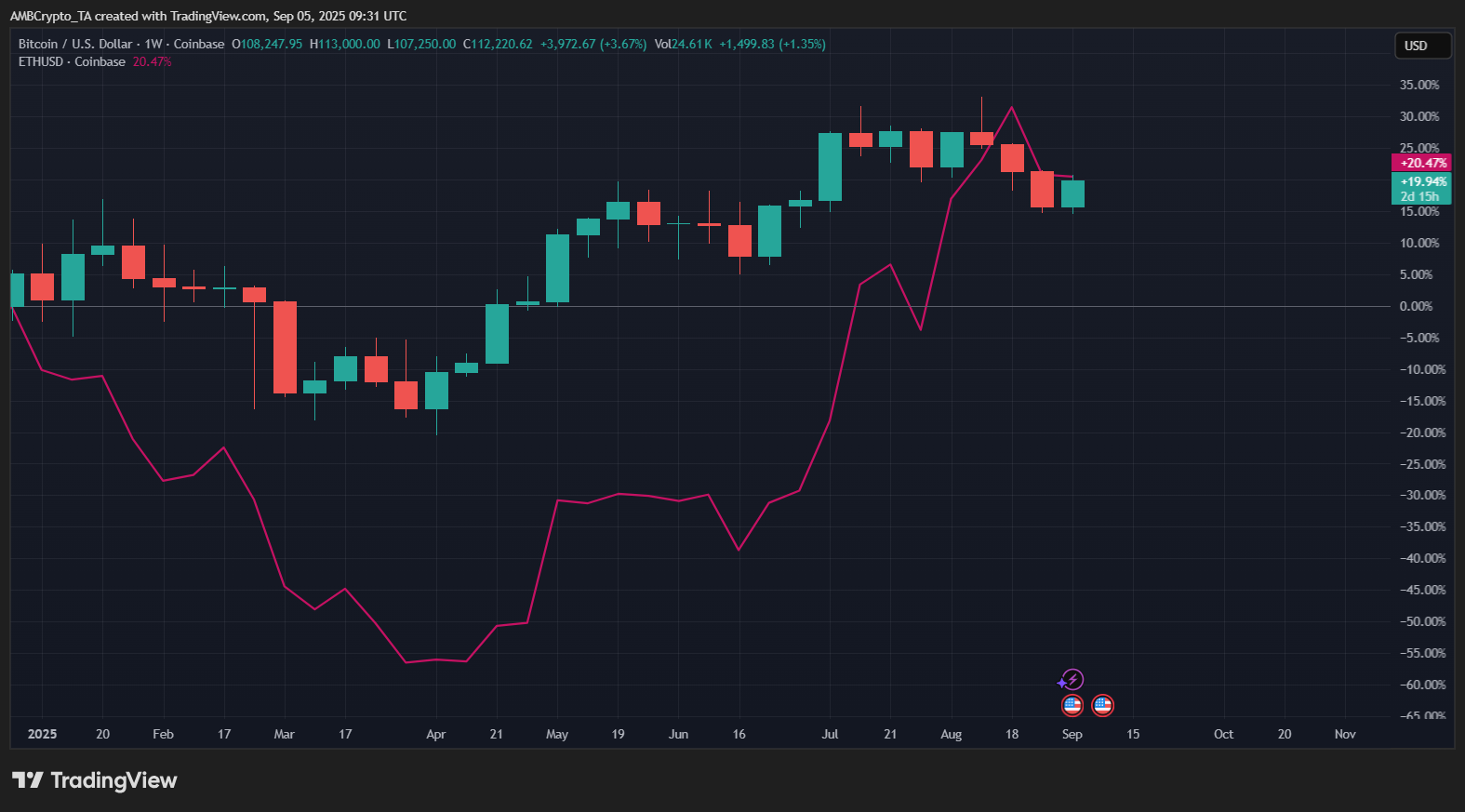Ethereum has overtaken Bitcoin in CEX spot turnover, with ETH posting roughly $480 billion vs BTC’s $401 billion in August. This shift signals rising Ethereum dominance driven by ETF inflows, institutional treasury buys, and stronger on-exchange liquidity for ETH.
-
Ethereum now leads Bitcoin in CEX spot volume (August): ETH ~$480B, BTC ~$401B.
-
Institutional treasury purchases and steady ETF inflows underpinned the ETH momentum.
-
Weekly and monthly flow data show a consistent shift in liquidity and market share toward Ethereum.
Ethereum leads Bitcoin spot volume: discover why ETH outpaced BTC in August and what traders should watch next — read our concise market update.
How did Ethereum take the lead in CEX spot volume?
Ethereum leads Bitcoin in CEX spot volume after ETH recorded approximately $480 billion in spot turnover for August versus BTC’s $401 billion. The gap reflects concentrated ETF inflows, sizable corporate treasury purchases, and consistent weekly liquidity favoring ETH on centralized exchanges.
What data shows ETH overtook BTC in August?
Exchange flow and turnover reports indicate ETH’s share rose steadily across August, culminating in a monthly flip. Reported figures: ETH ~ $480B spot volume; BTC ~ $401B spot volume. Sources cited in market data include The Block, CoinGecko, SoSoValue and TradingView as plain text references.

On a weekly basis, ETH outperformed BTC across most of August, signaling more than a single-week anomaly. Traders shifted liquidity toward Ethereum, increasing its share of total CEX turnover.
How much did treasury buys and ETF flows matter?
Institutional treasury disclosures and ETF flow data materially contributed to Ethereum’s momentum. Several corporate treasury filings showed multi-hundred-million-dollar ETH allocations, while ETH-linked funds posted sustained weekly inflows.

ETF flow snapshots showed uneven BTC product performance vs. steady green weeks for ETH funds. That consistency amplified ETH demand and improved on-exchange liquidity profiles for traders and funds.


ETH funds attracted fresh capital while some BTC products experienced outflows. That divergence helped ETH’s exchange turnover grow relative to BTC.
Is a full flippening likely?
Market-cap and returns data show Ethereum regained momentum in 2025 and closed the August gap toward a 25% market share relative to Bitcoin. Returns year-to-date favor ETH, but a permanent flippening would require sustained institutional allocation and persistent on-chain and off-chain demand.


Market-cap charts from TradingView and performance series from industry data providers show Ethereum climbing toward earlier market-share levels last seen in mid-2022. Whether this continues will depend on macro liquidity, regulatory developments, and further institutional commitments.
Frequently Asked Questions
What were the exact August spot volumes for ETH and BTC?
August spot turnover was approximately ETH $480 billion and BTC $401 billion according to compiled exchange turnover reports cited as plain-text sources in market data summaries.
How do ETF inflows affect exchange turnover?
ETF inflows increase demand, which can drive higher trading activity and liquidity on exchanges as managers and participants rebalance positions and execute trades.
Can treasury purchases by companies change market dynamics?
Yes. Large, disclosed corporate treasury purchases add credible, long-term demand that can shift investor sentiment and trading flows toward the purchased asset.
Key Takeaways
- Ethereum leads in spot turnover: ETH recorded higher CEX spot volume than BTC in August 2025.
- Flows and treasuries matter: Consistent ETF inflows and corporate ETH buys helped tilt liquidity toward Ethereum.
- Flippening remains conditional: Sustained institutional allocations and persistent inflows are required for a lasting market-cap flip.
Conclusion
Ethereum dominance in August’s CEX spot markets reflects a notable shift in liquidity and investor flows. While ETH’s lead is supported by ETF inflows and treasury purchases, the long-term outlook depends on continued institutional interest and market conditions. Traders should monitor weekly flows and institutional disclosures for confirmation.




